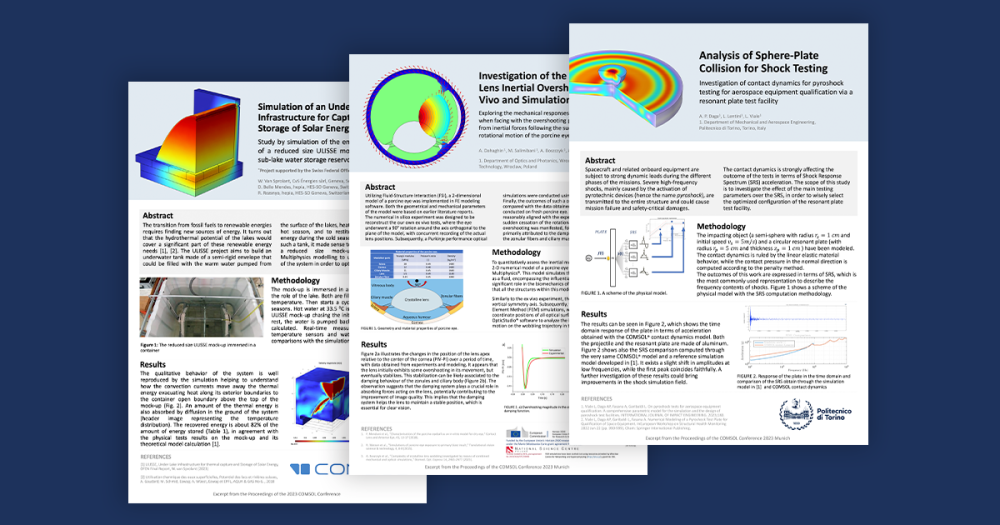
As computer hardware becomes more powerful and affordable, simulations are becoming commonplace in new disciplines of science and engineering. Food science engineering is one such area, and there is no shortfall of publications using COMSOL Multiphysics for food-related simulations. Such kinds of analyses pretty much always require several types of physics to be practically relevant.
Food Science Simulations
There are probably several reasons for the food industry to be interested in simulations. For one, long shelf-life of food items is important, and this could be a reason why many engineers are working with different drying and preservation processes, such as freeze-drying, microwave drying, roasting, and salt-infusion. Taste is of course also important, and the two are closely related. Imagine frozen food that tastes just as though your grandma had cooked it, after you heat it up!
As a testimonial, check out this list of papers presented by various users at the COMSOL Conference:
- Drying of Corn Kernels: From Experimental Images to Multiscale Multiphysics Modeling
- Multiphysics Modelling of Food Dehydration during RF Exposure
- Modelling of Heat and Mass Transfer in Food Products
- Heat and Mass Transfer in Partially Frozen Food Material
Not only food-science engineers are jumping on the simulation train, but top chefs (some of which also have a degree in engineering) are too. We’ve blogged before about chefs using simulations when cooking up a dish. As my colleague Andrew mentioned, Chef Hvarnes’ combination of culinary and simulation skills landed him a second place in the Bocuse d’Or Europe competition.

Multiphysics simulations are now getting the attention
of gourmet chefs.
Multiphysics Featured in Cookbook
The other week I found out about a cookbook that features multiphysics simulations. Nathan Myhrvold, Chris Young, and Maxime Bilet together with the Cooking Lab in Bellevue, Washington are releasing a series of cookbooks based on the science and art of cooking, with an emphasis on the science aspect.
Their first book, Modernist Cuisine, is a whopping 2,438 pages in 5 volumes. If you’re thinking of acquiring it, it could be fun to know that a COMSOL simulation is featured on page 282 of volume 1. In case your cooking is less ambitious, there is a shorter version of the book with less than 400 pages called Modernist Cuisine at Home.
The books have plenty of spectacular photos, and a new book dedicated to the topic is coming out in October, titled The Photography of Modernist Cuisine.






Comments (0)